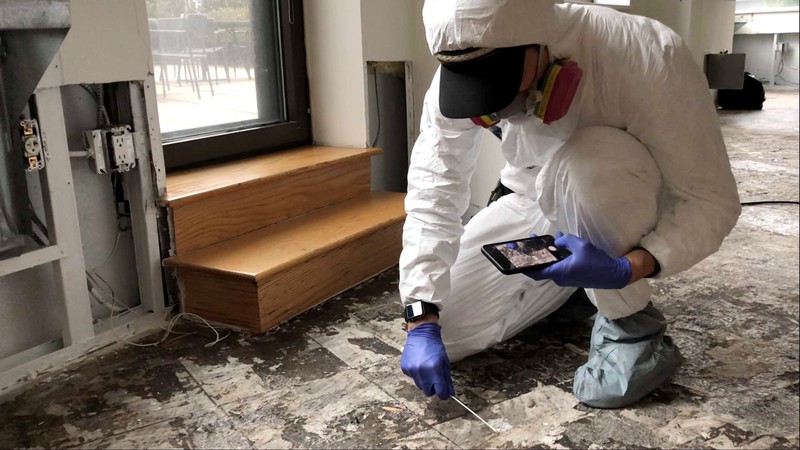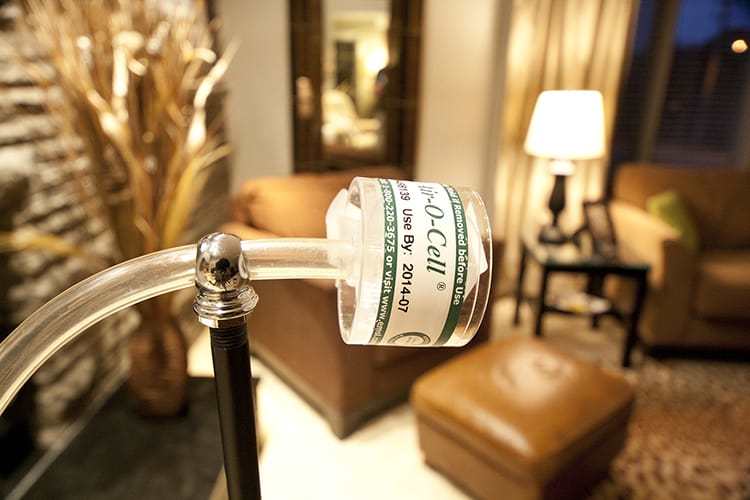Sampling Techniques
Sampling may be necessary when you need to know the type of mold and extent of amplification. Sampling is useful when (i) the source of the mold is unclear (ii) a desire to identify the type of mold (iii) health concerns warrant sampling and (iv) potential for litigation exists.
Sampling locations should include problem areas, an indoor non-problem area if available, and an outdoor sample (or samples) for interpretation. Air sampling data represents a specific moment in time and field observations are of equal importance. Noting items such as weather, activity levels, HVAC operation, and how accessible the outside air is (e.g. nearby windows and doors to the outside) is helpful in interpreting the results.
 Surface Sampling (i.e. swab, tape lift and/or bulk): Surface sampling is recommended for fungal identification on visible areas of growth. (If no visible mold is observed, surface sampling should be limited or eliminated as unnecessary.) Surface sampling may also be useful to confirm that an area has been adequately cleaned or remediated. It’s simple and inexpensive because it doesn’t require equipment. Surface samples are taken by tape lift imprint, by swabbing the suspect surface with a culturette swab, or by submitting a bulk sample of the suspect surface.
Surface Sampling (i.e. swab, tape lift and/or bulk): Surface sampling is recommended for fungal identification on visible areas of growth. (If no visible mold is observed, surface sampling should be limited or eliminated as unnecessary.) Surface sampling may also be useful to confirm that an area has been adequately cleaned or remediated. It’s simple and inexpensive because it doesn’t require equipment. Surface samples are taken by tape lift imprint, by swabbing the suspect surface with a culturette swab, or by submitting a bulk sample of the suspect surface.
Non-culturable Sampling: Non-culturable spore trap samplers draw measured volumes of air through the sampling device for a specified length of time. The collection surface is a coated glass slide. Particles in the air (spores, dust, etc.) impact onto the sticky surface and are "trapped" for later analysis.
 Culturable Air Sampling: Culturable air sampling is one of the most common methods of volumetric air sampling. Culturable air sampling works by drawing measured volumes of air through an instrument that contains a petri dish (or dishes) with culture media. Spores that impact onto the plate are then allowed to incubate and grow, after which the colonies may be counted and identified.
Culturable Air Sampling: Culturable air sampling is one of the most common methods of volumetric air sampling. Culturable air sampling works by drawing measured volumes of air through an instrument that contains a petri dish (or dishes) with culture media. Spores that impact onto the plate are then allowed to incubate and grow, after which the colonies may be counted and identified.
Interpretation of Laboratory Results:
Interpretation of biological air samples is formed primarily by two guiding principles.
- An effective interpretation is based on the comparison of indoor and outdoor samples. There are currently no guidelines or regulations to indicate "safe" or "normal" spore levels, however, you can typically expect indoor counts to be 30 to 80% of outdoor spore counts, with the same general distribution of spore types present.
- Species variation is an inherent part of biological air sampling. The presence or absence of a few genera in small numbers should not be considered abnormal.